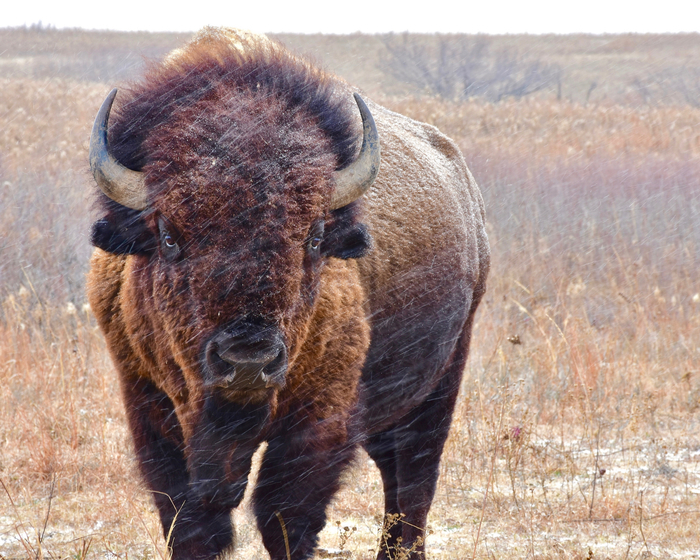Bison on the Prairie

Bison are a beautiful and iconic symbol of the prairie. They harken to a time where giant herds of the mammals were free to roam huge swaths of grasslands from Indiana to Idaho. Recent efforts to reintroduce these native grazing animals to the Flint Hills are evident in places such as the Tallgrass Prairie National Preserve near Strong City and Konza Prairie Biological Station near Manhattan.
The prairie once supported giant herds between 30 – 60 million strong. Hunting by buffalo hunters and planned extermination by the U.S. Army combined to nearly eliminate the American Bison from the plains. At one point only a couple of hundred bison existed – scattered in several small herds. Yellowstone, the oldest continuous herd, was reduced down to 24 animals in 1902; their population is now up to numbers between 2,300 and 5,000 animals. Currently, the U.S. is home to over 30,000 bison.
Some fast facts about bison:
- Bison are the largest mammal in North America – they can reach 6 ft. tall and weigh up to 2,000 lbs.
- The history of bison is intertwined with that of the Native American tribes who lived on the plains. Bison provided tribes with food, clothing, fuel, tools, shelter and served as a source of spiritual connection.
- The American bison (Bison bison) is the correct name for the animal – “buffalo” is the common name given by European settlers who thought the animal looked like an African buffalo.
- Their instinct is to migrate and the herd will try to move in a westerly direction until blocked by fences.
- They feed on actively growing native grasses. Their favorite food is the germinating grasses that grow prolifically just after a fire.
- Their society is matriarchal – the dominant cows (female bison) rule the roost.
- Bison are near-sighted but have an excellent sense of smell and acute hearing. So, if you think a bison can see you, think again. They can probably hear you, though.
